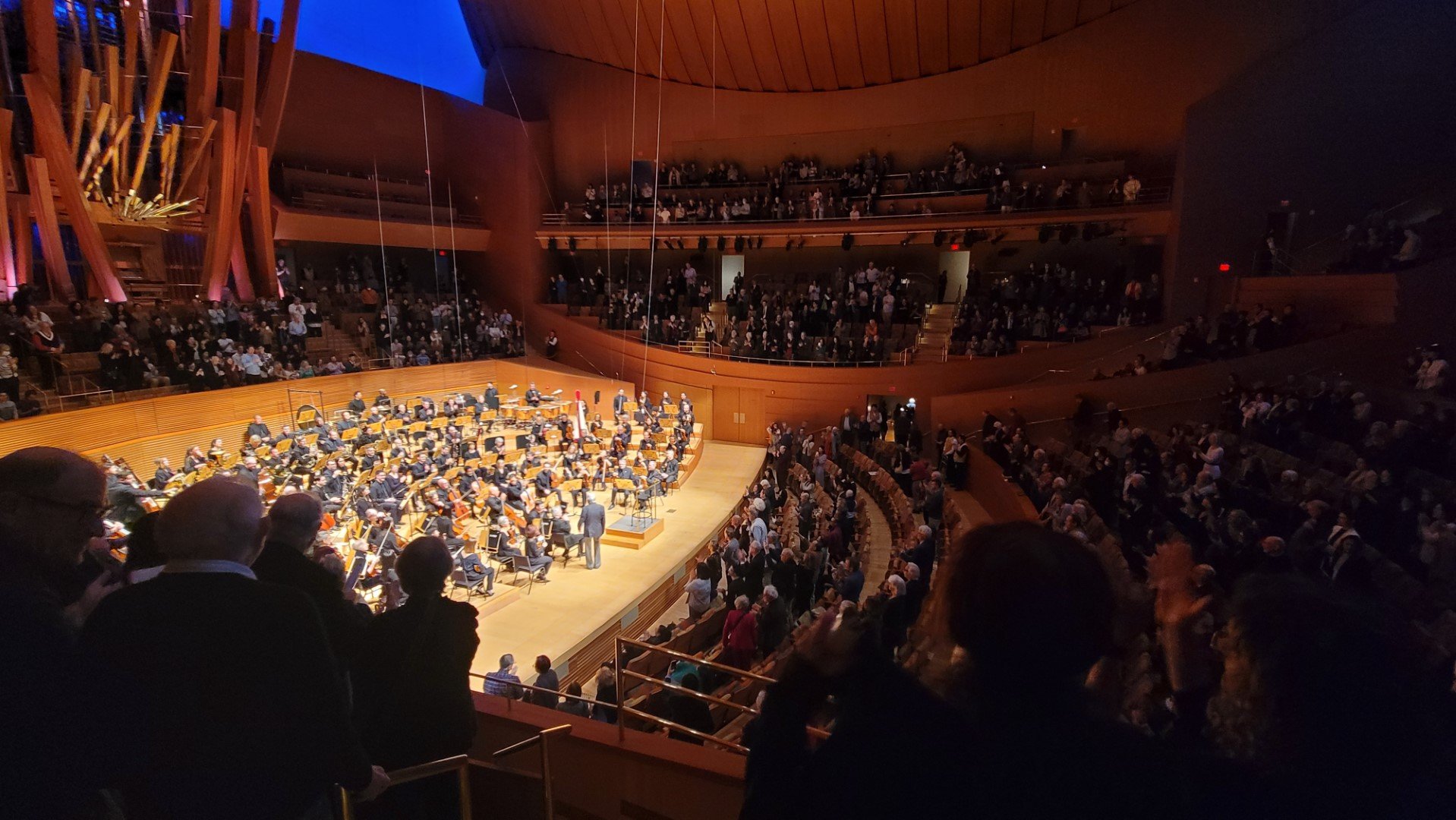December with Zubin Mehta Is the Month to be Jolly
/By Truman C. Wang
12/12/2023
Last week’s concert at the Disney Hall featured two Romantic warhorses and two powerhouse artists. L.A. Phil’s Music Director Emeritus Zubin Mehta, age 87, returned to conduct a program of Schumann and Mahler. The venerated old maestro is physically limited by mobility issues and conducted with a small range of motions. (I heard someone in the audience comparing him to Fritz Reiner with Chicago.) Despite Mehta’s feeble state, the orchestra musicians knew what they were doing, and only needed minimal encouragement to unleash their full powers and virtuoso solos. In the Schuman Piano Concerto, one had the amusing impression that the real conducting was from the excellent Korean pianist Seong-Jin Cho, who listened intently to his orchestral partner and often outstretched his arms as if cuing a beautiful woodwind passage or a string melody. Mr. Cho’s playing was large and sensitive in the first movement, romantic and rapt in the second, fiery in the finale. The tone from his Steinway was robust, rounded and – in the encore Clair de lune – delicate and crystalline.
I feel like going off on a brief tangent here. On the subject of the Romantic piano works, I recall attending a piano symposium in the 1990’s, where a panel made up of pianists and a musicologist demonstrated-discussed early pianos. Their conclusion: pre-Steinway (1859) piano music is best played on a pre-Steinway piano – Chopin and Schumann on a Pleyel, Liszt and Ravel on an Erard, Brahms on a Streicher. Evenness of tone is a touted virtue by Steinway, but much of early Romantic piano music presumes distinct shadings in the different registers of a keyboard. Moreover, while it is technically possible on the modern Steinway to simulate the effects of the composer intended, in order to achieve them adjustments have to be made in pedaling, dynamics, touch, even suggested tempos. This is abundantly clear when playing the opening of Schumann’s Faschingsschwank, or the sighing motif of the second dance in Davidsbündlertänze. Clara Schumann, writing to Robert in 1839, expressed her preference for the Pleyel’s delicate tone and touch to the louder, mechanically more sophisticated Erard. Bigger is not always better, and not all pianists, not even Seong-Jin Cho, have Horowitz’s apparently instinctive genius for making his Steinway sound like just about any kind of piano he wanted it to be.
Back to the concert in review. Mehta’s account of Mahler First Symphony after the intermission was unlike any I have heard, with its insertion of the “Blumine” movement between the first and second. Stylistic questions aside, this early discarded piece by Mahler served as a showcase vehicle for the L.A. Phil’s admirable principal trumpet Tom Hooten, as well as a tranquil repose before resuming the rest of the ‘Titanic’ symphony. Using eye contact and the smallest left-hand gestures, Mehta drew out a maelstrom of sounds and memorable solo passages from the harp, timpani and oboes (I counted 3 instead of the 4 in the score). The 8 horns (5 of whom were women) merely raised their instruments and did not stand up as per the score, but it was a thrilling finale nonetheless that drew a huge ovation.
Poor audience behavior at classical music concerts is par for the course these days: applause after the first movements of the Schumann and Mahler, a few ill-timed dropping of cellphones (one in the beginning of the hushed first movement, one in the beginning of the hushed third movement.) And I seemed to hear someone let out a shriek during one of the three climaxes in the last movement. The beloved old maestro will return next week to conduct Beethoven symphonies, on the composer’s birthday to boot.
Truman C. Wang is Editor-in-Chief of Classical Voice, whose articles have appeared in the Pasadena Star-News, San Gabriel Valley Tribune, other Southern California publications, as well as the Hawaiian Chinese Daily. He studied Integrative Biology and Music at U.C. Berkeley.


